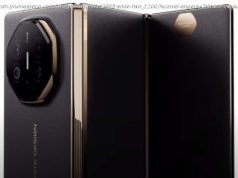Check out our roundup of the best new crowdfunding projects and product announcements that hit the web this week.
At any given moment, there are approximately a zillion different crowdfunding campaigns happening on the Web. Take a stroll through Kickstarter or Indiegogo and you’ ll find no shortage of weird, useless, and downright stupid projects out there – alongside some real gems. We’ ve cut through the Pebble clones and janky iPhone cases to round up the most unusual, ambitious, and exciting new crowdfunding projects out there this week. That said, keep in mind that any crowdfunding project — even the best intentioned — can fail, so do your homework before cutting a check for the gadget of your dreams.
Specdrums — light-sensitive music creation platform
If there’s one thing crowdfunding sites are good for, it’s helping crazy new musical instruments come to life. Over the years, kickstarter and indiegogo have acted as springboards for just about every oddball noise-making device you could ever imagine: drum pads built into pants, motion-sensitive synthesizers, and even an all-in-one guitar/bass/piano/drum kit. The trend isn’ t going away, and the latest addition to the growing list of offbeat insruments is arguably one of the strangest (and most intriguing) yet.
Specdrums, as its called, is a freeform music creation system that relies on programmable, light-sensitive actuators that translate color into sound. To make music with Specdrums, you start by slipping one or more of the system’s Bluetooth-equipped rings onto your fingers (or drumsticks, if that’s more your style) .
When the rings tap on a surface, they shine a light on the surface, and a small sensor picks up the color. This color is instantly translated into a corresponding note — which plays through a connected speaker. The sound a given color creates can be assigned with the accompanying Specdrums smartphone app — meaning you can basically turn anything into an instrument that makes any sound you desire. Pretty nifty, right?
Luna Display — Wireless display extender for Mac/iPad
Ever wished you could use your iPad as a wireless second display for you Mac? Well, good news! There’s finally a decent way to make it happen. It’s called Luna Display, and it’s basically a tiny dongle (roughly the size of your thumb nail) that plugs into your computer’s Mini DisplayPort, USB-C, or USB 3 port. Once installed, it works through an app on your iPad, and connects the tablet display to your Mac via Wi-Fi.
Now, truth be told, this kind of thing has been possible for quite some time, but most Mac-to-iPad display extenders are software-based solutions, not hardware-based like Luna. The dongle approach has a couple big advantages though. Because it’s plugged into your Mac, Luna can tap into its graphics processor capabilities — something no app can do. Essentially, this means that Luna can offer super high image quality, despite the fact that it’s completely wireless.
And that’s just the tip of the iceberg. Luna Display is actually a two-way extension to your Mac, allowing you to interact with your computer directly from your iPad. It literally turns your Mac into a touchable device, allowing pinching, panning and tapping, making it much more than just a second screen.
New Nine — Size-adjustable 3D printer
3D printers have come a long way in the past few years. It used to be that they were only found in well-funded engineering labs and the basements of uber-geeky enthusiasts — but now they’ re available to anyone with $150. On top of that, the range of materials we can print with has greatly expanded in recent years. It’s not just ABS and PLA anymore; 3D printers can make stuff with wood, clay, nylon, and even metal these days.
Despite all the advances we’ ve seen lately, there’s still one big limiting factor that’s holding 3D printers back: build envelope. Right now, if you want to make an object that’s bigger than your printer, you’ re out of luck — but what if that wasn’ t the case?
That’s precisely the idea behind the New Nine — an adjustable, scalable 3D printer that can be resized to accommodate bigger parts, when the job calls for it. We’ re not just talking more width, either — the printer’s dimensions can be expanded along all axes, meaning you can make it wider, longer, taller, or any mix of the three.
As if that wasn’ t awesome enough, it also has a boatload of high-end features, such as a heated bed, a mass damper to eliminate wobble, and a magnetic screen that can be re-positioned in seconds. Oh, and it’s also completely open source, which is pretty awesome.
DribbleUp — Smart soccer ball
Smart sports equipment is everywhere these days. We’ ve got swing analyzers for golf, tennis and baseball; sensors that measure reps for weightlifters, and a veritable boatload of fitness trackers that analyze your daily activity. But oddly enough, soccer (or football, to anyone reading this outside the U. S.) has largely been ignored in this trend, despite the fact that it’s arguably the most popular sport on the planet. But that might soon change if DribbleUp’s latest Kickstarter campaign finds success. The company, whose first product was a stat-tracking basketball that launched a few years ago, is now working on a stat-tracking soccer ball.
“We’ ve reinvented the soccer ball for the digital generation, ” Eric Forkosh, CEO of DribbleUp, told Digital Trends . “Our ball connects to an augmented reality app on your phone so you can train anytime and anywhere — in your home, on the field, wherever. The virtual trainer on the app guides through interactive drills with live audio feedback and gives you a drill-by-drill graded breakdown so you know what you need to improve. Even when it’s raining or too dark outside, you can always practice in your room with the virtual trainer and take your game to the next level. Most importantly, our match-ball quality soccer ball has no batteries, so you never need to charge it and costs less than a standard match ball. Why buy a dumb ball when you can get a smart ball for the same price?”
Shaveman — Vibrating razor attachment
Ever since the practice of shaving has existed, inventors have been trying to re-invent the razor. First it was disposables, with cheap, mass-produced, and easily swappable blades.






